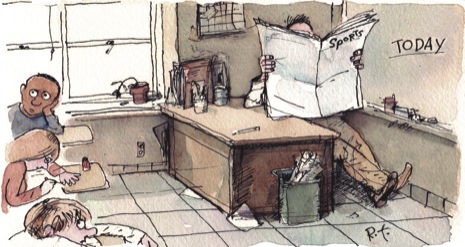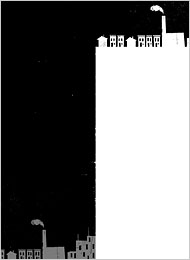Example Articles

Challenge, Anyone?
By PAUL KEDROSKY
Published: September 20, 2009
ROGER FEDERER is getting teased, and not just because he lost the U.S. Open last week to Juan Martin del Potro. He is being mocked for his terrible eye. He challenged more calls in the U.S. Open than any other competitor, and yet he had one of the lowest success rates of any of the top players.
Insult to injury, right? Wrong. Federer is adept at challenging tennis calls, and he should challenge more of them — as should his rivals. Professional tennis players are almost certainly losing matches because of their unwillingness to do so.
Here’s how challenges work. Major tennis tournaments (like the U.S. Open) have multiple cameras arrayed around the court. This permits a simulated replay of a shot, showing to the millimeter where a ball landed on the court. So instead of futilely shouting, “You can’t be serious!” at linesmen and umpires, players can raise their hand immediately after a call and ask for a replay.
[The full article is here.]
THE RUBBER ROOM
The battle over New York City’s worst teachers.
by Steven Brill
AUGUST 31, 2009

One school principal has said that Randi Weingarten, of the teachers’ union,“would protect a dead body in the classroom.”
In a windowless room in a shabby office building at Seventh Avenue and Twenty-eighth Street, in Manhattan, a poster is taped to a wall, whose message could easily be the mission statement for a day-care center: “Children are fragile. Handle with care.” It’s a June morning, and there are fifteen people in the room, four of them fast asleep, their heads lying on a card table. Three are playing a board game. Most of the others stand around chatting. Two are arguing over one of the folding chairs. But there are no children here. The inhabitants are all New York City schoolteachers who have been sent to what is officially called a Temporary Reassignment Center but which everyone calls the Rubber Room.
These fifteen teachers, along with about six hundred others, in six larger Rubber Rooms in the city’s five boroughs, have been accused of misconduct, such as hitting or molesting a student, or, in some cases, of incompetence, in a system that rarely calls anyone incompetent.
[The full article is here]

The Recession’s Racial Divide
By BARBARA EHRENREICH and DEDRICK MUHAMMAD
Published: September 12, 2009
WHAT do you get when you combine the worst economic downturn since the Depression with the first black president? A surge of white racial resentment, loosely disguised as a populist revolt. An article on the Fox News Web site has put forth the theory that health reform is a stealth version of reparations for slavery: whites will foot the bill and, by some undisclosed mechanism, blacks will get all the care. President Obama, in such fantasies, is a dictator and, in one image circulated among the anti-tax, anti-health reform “tea parties,” he is depicted as a befeathered African witch doctor with little tusks coming out of his nostrils. When you’re going down, as the white middle class has been doing for several years now, it’s all too easy to imagine that it’s because someone else is climbing up over your back.
Heads of State
Despite the sense of white grievance, though, blacks are the ones who are taking the brunt of the recession, with disproportionately high levels of foreclosures and unemployment. And they weren’t doing so well to begin with. At the start of the recession, 33 percent of the black middle class was already in danger of falling to a lower economic level, according to a study by the Institute on Assets and Social Policy at Brandeis University and Demos, a nonpartisan public policy research organization.
In fact, you could say that for African-Americans the recession is over. It occurred from 2000 to 2007, as black employment decreased by 2.4 percent and incomes declined by 2.9 percent. During those seven years, one-third of black children lived in poverty, and black unemployment — even among college graduates — consistently ran at about twice the level of white unemployment.
[The full article is here.]